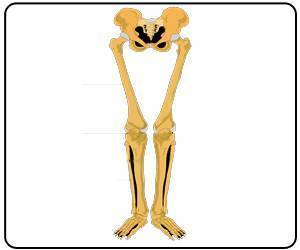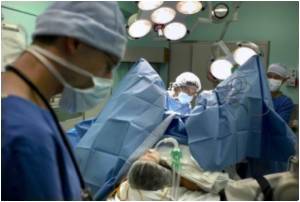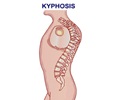More than half of the patients who suffered hip fractures were not informed that they have osteoporosis and not prescribed medications to treat the condition.

‘About 57% of patients with osteoporosis have not been prescribed osteoporosis medication by their physician after hip fracture.
’





Dr. Barnett's research, in which she collaborated with senior author Gisele Wolf-Klein, MD, director of geriatric education for Northwell Health, and co-investigator Stuart Weinerman, MD, an endocrinologist at Northwell Health, is scheduled for presentation at The American Geriatrics Society's 2016 Annual Scientific Meeting, which will take place in Long Beach, CA, from May 19-21. "You can die after a hip fracture, and you're at great risk of prolonged complications," said Dr. Wolf-Klein. "You can also be left as an invalid, a fear of many older adults. When we think about how preventable hip fractures are, the fact that most patients aren't told or understand they have osteoporosis - a disease that can be treated - is an enormous problem."
Meaning "porous bone," osteoporosis affects more than 10 million people in the United States, according to the National Osteoporosis Foundation. But while a quarter-million Americans sustain a hip fracture each year, the estimated treatment rate for osteoporosis after a hip fracture - a fracture nearly always indicating osteoporosis in older adults - ranges from only 2% to 25%.
All post-hip fracture patients surveyed by Dr. Barnett and her colleagues (average age 86; 86% female; 69% white) had been discharged one year prior from two Northwell Health hospitals. "These results are in line with national treatment rates for osteoporosis after hip fractures," Dr. Barnett said. In addition, she said, "To be at the forefront in treating osteoporosis after hip fractures, two Northwell Health hospitals have implemented specific services designed to engage multidisciplinary clinical teams to help improve treatment rates for osteoporosis."
Only 12 % of patients reported having a family history of osteoporosis, which will cause about 1 in 2 women and 1 in 4 men over age 50 to break a bone. But "self-reported family history from these patients is notoriously unreliable, and when it is there, they still can get it wrong," Dr. Weinerman explained. "We do know that if a mother had a hip fracture, that doubles her daughter's risk of future hip fracture."
Advertisement
On the other hand, effective prescription osteoporosis drugs - which maintain bone density and lower the risk of a fracture - are available in many forms to accommodate patients' needs and wishes, including twice-yearly infusions or weekly pills, they said.
Advertisement
"These numbers show the need to improve our overall treatment plan for osteoporosis, which includes fall-prevention education for patients and their families," Dr. Barnett said. "We can definitely get that re-fracture number lower if patients are treated with osteoporosis medications."
When asked if they would accept prescription osteoporosis medication now that they'd suffered a hip fracture, half of the participants said they were not sure, with 25% agreeing and 25% rejecting the idea. Finally, 36% felt the best time for osteoporosis education would be during follow-up with their primary care doctor, while 25% preferred education prior to hospital discharge and 19% during rehabilitation.
"There's an enormous amount of misunderstanding about osteoporosis among the public and lack of education from physicians taking care of patients," Dr. Weinerman said. "Doctors don't talk about it and the perception is that these osteoporosis drugs are dangerous or not effective. Unfortunately, these misperceptions are just incorrect. So a lot of public education needs to be done, but it should start with physicians."
All older adults - women at age 65 and older and men at 70 and older -- should undergo bone mineral density testing, which consists of a painless, quick procedure known as a DEXA scan, according to the National Osteoporosis Foundation.
Source-Eurekalert














